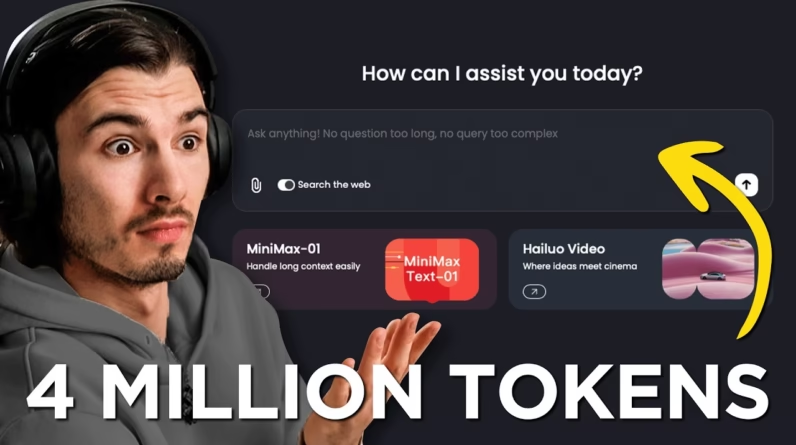
Starting an AI Automation Agency can be an exciting journey, but it often comes with its fair share of hurdles, especially when it comes to securing that first client. In this article, discover how common beginner mistakes can hold you back and the straightforward steps you can take to avoid them. With insights from Liam Ottley, you’ll learn not only about the challenges but also how to build a solid sales process to enhance your success.
You’ll explore the importance of defining your sales funnel and the key strategies for effective outreach. Four common pitfalls will also be discussed, giving you the clarity you need to navigate client acquisition with confidence. By the end, you’ll be better prepared to sign your first client and set your agency on the path to growth.
Table of Contents
Introduction to the Challenges in Signing Your First Client
Starting your journey in the world of AI automation agencies can be both exhilarating and intimidating. As you embark on this adventure, one of the significant hurdles you’ll likely face is signing your first client. This can feel daunting, especially when you are unsure about the landscape you’re venturing into and the common fears that may hold you back.
Understanding the Landscape of AI Automation Agencies
The business of AI automation is growing rapidly, with many businesses seeking ways to streamline their operations and improve efficiency. As an aspiring agency owner, it’s vital to understand this landscape—the needs of potential clients, the competitive environment, and how your services fit into it. You’ll find that while the market presents vast opportunities, it is also filled with competition. Knowing your audience, their pain points, and how AI solutions can help them is essential to position your services effectively.
Common Fears and Misconceptions Held by Beginners
As a beginner, you may be plagued by various fears and misconceptions about starting your AI automation agency. You might worry about your credibility, wonder if your services will be adequate, or fear rejection from potential clients. Many people believe that you need extensive experience or a vast portfolio to secure your first client; however, this is often not the case. Understanding that everyone starts somewhere and embracing a growth mindset can help you navigate these fears.
Importance of a Defined Sales Funnel
A defined sales funnel is crucial to your agency’s success. It provides a visual representation of how potential clients move through your engagement process, from awareness to decision-making.
Explaining the Concept of a Sales Funnel
A sales funnel is a model that illustrates the journey a lead takes from first becoming aware of your agency to finally becoming a paying client. It typically consists of several stages: awareness, interest, consideration, and closing. By mapping these stages, you can identify where potential clients are and know what actions to take to guide them further down the funnel.
How a Clear Sales Funnel Streamlines Client Acquisition
When you have a clear sales funnel, it streamlines your client acquisition process. It allows you to track your leads systematically, tailor your outreach strategies at each stage, and assess the effectiveness of your efforts. A well-defined funnel also helps you understand areas that may need improvement. This clarity ultimately boosts your efficiency and increases the chances of converting leads into clients.
Steps in the Sales Process
Navigating the sales process can seem overwhelming for beginners, but breaking it down into manageable steps can make it more approachable.
Initiating Cold Outreach Effectively
Cold outreach is often the first step in acquiring new clients. Whether it’s through email, LinkedIn, or social media platforms, the goal is to make initial contact to spark interest. Focus on crafting compelling messages that highlight the potential benefits of your services. Remember, your aim isn’t to close a deal right away but to engage your lead and encourage them to express interest.
Guiding Leads Through the Interest Stage
Once your leads show initial interest, it’s essential to provide them with additional information. This may include sharing case studies, testimonials, or offering a demo of your services. During this stage, your goal is to nurture the lead’s interest and invite them to join you for a call to discuss their needs further.
Building Rapport During Initial Calls
Building rapport on initial calls is crucial. Take the time to listen to your potential client’s challenges and be genuinely interested in their business. This will foster a relationship of trust and open communication, making clients more receptive to your suggestions and solutions. Use this part of the conversation to ask questions, gather insights about their needs, and tailor your approach accordingly.
Closing the Deal: Key Considerations
When it comes to the closing stage, it’s important to have your proposal ready. Clearly outline how your services can solve the client’s problems and offer them a tailored solution. Key considerations include understanding the client’s budget, their timeline, and ensuring that you address any objections they may have. Approach the close with confidence and reiterate the value you provide.

Setting Key Objectives at Each Sales Stage
Creating specific objectives for each stage of the sales process helps you maintain focus and direction throughout your outreach efforts.
Defining Clear Goals for Outreach and Engagement
For effective outreach, set clear goals, such as aiming for a certain number of replies from your initial outreach or the number of calls scheduled per week. These goals will provide you with a benchmark to measure your progress.
The Importance of Maintaining Clarity and Direction in Communication
Clarity in communication is vital at every stage of your sales process. Whether in your emails, meetings, or follow-ups, ensure that your messages are compelling but straightforward. This helps to prevent misunderstandings and builds a trustworthy relationship with your leads.
Common Beginner Mistakes in Client Acquisition
Every beginner has their fair share of missteps as they navigate client acquisition. Recognizing these common mistakes can help you avoid them and streamline your path to success.
Highlighting the Mistake of Selling Too Soon
One of the most frequent mistakes beginners make is attempting to sell their services too early in the conversation. It’s important to remember that clients are looking for solutions to their problems, not pushy sales tactics. Instead, focus on building relationships and understanding their needs first.
Discussing Self-Focused Communication Issues
Another common pitfall is self-focused communication; many beginners tend to talk more about themselves rather than the client’s needs. Shift your focus to the client’s business. In conversations, use “you” and “your” more than “I” and “my.” This client-centric approach fosters a stronger connection.
Explaining the Pitfalls of Lack of Prospect Research
Failing to conduct thorough prospect research is another costly mistake. Knowledge about your prospects’ industries, challenges, and goals allows you to tailor your pitches effectively. This demonstrates that you care about solving their specific problems, improving your chances of engagement.
Identifying the Dangers of Ignoring Multiple Outreach Channels
Limiting your outreach to just one channel can restrict your potential reach. Experimenting with various channels like email, social media, and networking events can help you find where your ideal clients hang out. Ignoring these avenues can lead to missed opportunities.
Avoiding the Pitfall of Selling Too Soon
In your eagerness to make sales, you may find yourself diving into a hard sell. However, understanding the significance of relationship building is crucial.
Understanding the Importance of Relationship Building
Clients want to feel valued and understood. Building relationships should be your initial focus before any attempt to sell. When clients recognize that you’re interested in their success, they’re more likely to trust you with their business.
Techniques to Promote Meetings Over Direct Sales
Instead of pushing for sales right away, aim to secure meetings. Use language like, “I’d love to discuss how we can help your business” rather than making direct sales pitches. This soft approach encourages more potential clients to engage with you.
The Curse of Self-Focused Communication
Shifting from a self-focused to a client-focused communication style is essential for success.
Strategies for Shifting Focus to the Client’s Needs
Start by formulating questions that demonstrate interest in your client’s challenges. Instead of talking about your achievements, ask about their goals and pain points. This will establish a rapport and position you as a valuable partner in solving their problems.
Examples of Effective Client-Centric Language
In your conversations, use language that places emphasis on the client. Phrases like “What challenges are you currently facing?” or “How can we support your objectives?” resonate way more than statements centered around your agency.
The Necessity of Prospect Research
Research can significantly enhance the effectiveness of your outreach and follow-ups.
Techniques for Conducting Thorough Prospect Research
Utilize tools like LinkedIn and industry reports to gather insights into your potential clients. Understand their business models, challenges, and goals, and stay updated on their recent news or achievements—doing so provides valuable context for your communications.
How Research Can Tailor Pitches and Improve Engagement
Personalizing your outreach with insights gained from your research demonstrates your genuine interest in the prospect. When your pitch aligns with their specific needs, it’s more likely to lead to meaningful engagements and conversations.
Leveraging Multiple Outreach Channels
Diversifying your outreach strategies expands your chances of success.
Identifying Effective Outreach Methods (Email, LinkedIn, etc.)
Explore various channels like emails, LinkedIn messages, and even traditional networking events. Each channel has unique benefits and can help you connect with different audiences effectively.
Benefits of Diversifying Engagement Strategies
Using multiple channels allows you to reach your prospect where they feel most comfortable. This approach not only increases your outreach effectiveness but also helps you build a multifaceted relationship with your potential clients.
Conclusion
As you set out to sign your first client for your AI automation agency, be prepared for the challenges that lie ahead. Remember to define your sales funnel, set clear objectives, and steer clear of common beginner mistakes.
Recap of the Main Challenges Faced by Beginners
From selling too soon to communication missteps, understanding these challenges equips you with the tools to navigate the complexities of client acquisition effectively.
Encouragement to Continually Refine Sales Techniques
Keep refining your sales skills as you gain experience. Learning from each interaction, whether successful or not, paves the way for growth and improvement.
The Importance of Patience and Persistence in Client Acquisition
Finally, remember that patience and persistence are key. Building a successful AI automation agency doesn’t happen overnight, but with determination and the right strategies, you’ll find your first clients and many more to follow. Each step will contribute to your overall success and solidify your position in the industry. Happy selling!







